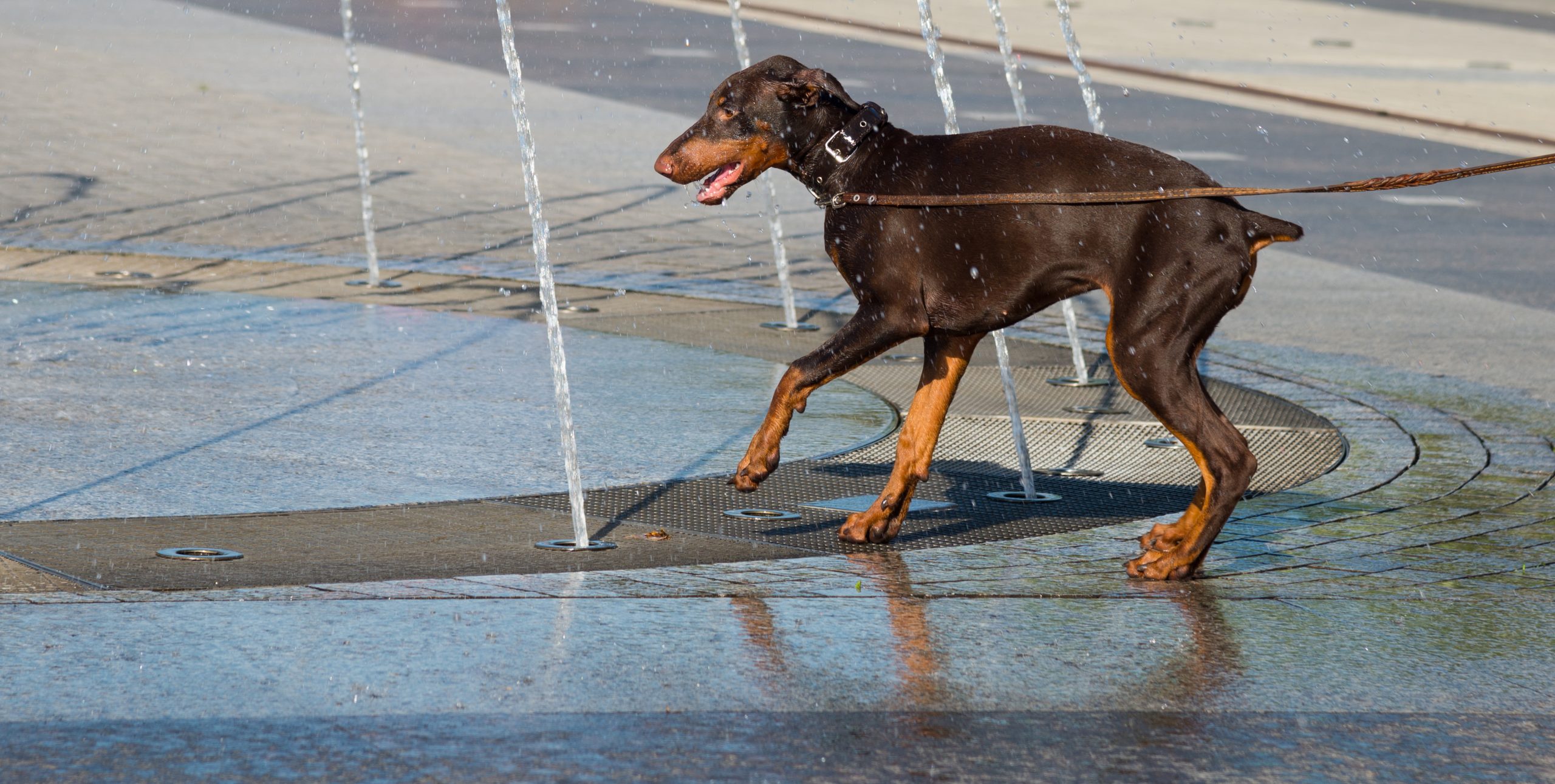As the temperatures have crept upward, we have seen an increase in the number of dogs with burnt paws from walking on hot asphalt. It is crucial to be aware of how easily your pets can become burnt due to hot temperatures and take the steps to keep your pets safe in the summer heat. Not only can they become burnt relatively easily, but pets are also susceptible to heatstroke and devastating health consequences when exposed to too high temperatures. Here are a few of the best tips for keeping your pets safe in the summer heat.
Be Careful with Walks
Your pet’s paws can become burnt easily when walking on hot asphalt surfaces. Though it can be important for them to still get their exercise, it is exceedingly important to take the steps to keep them safe in the summer heat. You should always check the temperatures for the day before you take them for a walk and avoid walking in the midday heat. Walks should only take place in the early morning or late evening hours. If you are unsure if the asphalt has cooled enough for your pet’s paws, you can place your own skin in contact with the surface. If you can’t comfortably hold it on the surface, neither can your pets.
When you go for your walks, you should try to walk your pets on the grass as much as possible. The grass won’t retain heat as much as asphalt or concrete surfaces, so they are less likely to become burnt when walking on grass. There are additional options for protecting your pet’s paws, as well, such as booties that can keep their paws from getting hurt. However, the use of these booties doesn’t mean that you can walk them in midday heat, because they are still likely to become dehydrated or suffer from heatstroke.
Keep them Hydrated
Dehydration is extremely common during the summer months. It is important to ensure that your pet always has access to water. When you take them on walks, you should bring water along with a collapsible water bowl. Stop frequently for water breaks and ensure that they are drinking adequate levels of water. When you are at home, keep their water dish filled at all times and never withhold water from your pet. Learn the signs of dehydration and the steps to combat it if it arises.
Don’t Shave your Pets
Logically, you may think that your pet may stay cooler if you shave their thick fur coat. However, you should never do this! While it is possible that you can trim the long fur on a coat, you should never shave your pet. Their coats are naturally designed to keep them cool in the summer and warm in the winter. When you shave your pet, they are more vulnerable to becoming burnt from the sun, because they won’t have the layer of fur to protect their skin. Certain pet-specific sunscreens can also be implemented to help reduce the likelihood of your pet becoming burnt from exposure to the sun. However, it is important to ensure that it is a pet-specific formula. You should never use a product designed for humans on your pet.
Truck Beds Should be Avoided
Many people allow their pets to travel in the bed of their truck, because they think that that is safer than keeping them inside the cab. However, while you should never leave your pet in a parked car, the truck bed can still be problematic in the summer. The metal of the truck bed heats up quickly in the summer months. This can cause burns to their paws and can also cause them to overheat much more quickly. Allowing your pet to travel in a truck bed can still cause injuries, so you should avoid it.
Never Leave them in a Parked Car
Some people think that they can leave their pet in a parked car, as long as they have water and leave the windows cracked. However, the internal temperatures of cars can easily skyrocket. Even on a relatively mild 80-degree day, the internal car temperatures can easily reach over 100 degrees in as little as 10 minutes. This is still true when you have the windows cracked. In addition to the danger to your pet from exposure to such high temperatures, leaving your pet in a parked car is illegal in many states. It is crucial to never leave them in a parked car in the summer temperatures.
Learn the Signs of Heatstroke
Learning the signs of heatstroke can go a long way toward helping you to ensure that you provide your pet with the care that they need. Excessive panting and salivating are often some of the first signs that you will see with heatstroke. A pet that is in obvious discomfort may be experiencing heatstroke. Severe signs of heatstroke tend to include vomiting, disorientation, diarrhea, and even seizures. When your pet is exhibiting the signs of heatstroke, it is important to provide immediate care.
Safe Hiking
Hiking with your pets is an incredibly popular pastime in the summer months. When you engage in this activity, it will be important to take the steps to keep your pet safe in the summer heat. Always have ample amounts of water and do your research regarding the trail you intend to take them on. Learn the signs of heatstroke and never do a hike that will be too far outside their fitness level.
Our expert team at Skyline Animal Hospital is dedicated to providing you with the guidance that you need to keep your pet in the best possible health. During these extremely hot temperatures, it is critical to ensure that you take the steps to keep your pet safe in the summer heat. Always provide them with adequate levels of water and provide plenty of shade and opportunities to cool down. Never walk your pet in the midday heat or leave them in a parked car. To learn more about how to keep your pets safe in the summer heat, contact us at Skyline Animal Hospital today!


